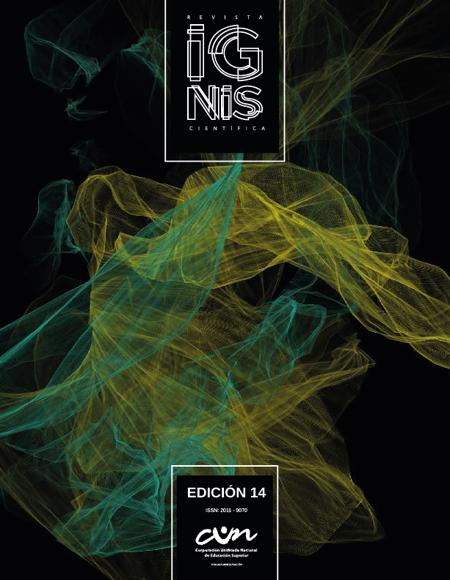Industrial design skills for innovation
Competencias del diseño industrial para la innovación
Main Article Content
Abstract
This document responds to the relationship between industrial design and innovation, which has become closer in terms of product innovations, which when reviewed from the history of industrial design, with emphasis on the German design schools of the "modern" movement, were of great influence for the gestation of our schools in Latin America, and the current bibliography regarding competences and roles of industrial design. In light of the competencies that designers intend to develop and practice, there is a great capacity to contribute to innovation processes in companies, which can go beyond product or service design and development. It concludes with the definition of competence, and industrial design competences, in terms of what it does and how it does it, where the starting point is the historical bases and culminates with those currently required for the development of the profession.
Downloads
Article Details
References (SEE)
Borja de Mozota, 13. (2006). El Diseño De la Innovación, dos retos para la profesión del diseño. Innovación y Diseño, 23. Imps://dialnet.unirioja.es/servlet/mticulo?codigo=3133910
Bürdek, B. (1994). Diseño. Historia, teoría y práctica del diseño industrial. (Ira. ed.). Gustavo Gili.
Centro de Diseño, DuocUC. (2003). Educación del diseño basada en competencias: un aporte a la competitividad. Prgecto FONDEE D991 1038. Instituto Profesional DuocUC, Pontificia Universidad Católica de Chile.
Chiva, R. (2004). Repercussions of Complex Adaptive Systems on Product Design Management. Técli-novalion, 24, 707-711. https://wwwresearchrrate.net/publication/229521971 Repercussions of Complex Adaptive Systems on Pmduct Design Management
Conley, C. (2004). Leveraging Design's Core Competencies. Design Management Institute, 15, 15-51. https://www.id.iit.edu/stp-content/tmloads/2015/03/1"eragingDesignsCoreCompetencies conley DMI summer01..pdf
Cross, N. (1982). Designerly Ways of Knoming. Design Studits 301 221-227. https://wwwsciencedirect. com/science/article/ahs/pii/0112694X82900400
Fernández, S. (2003). La influencia de la HfG Ulm en la enseñanza de diseño en América Latina. En, Modelos de ulm— Modelos post-ulm, 1953-1968. 1-IfG-Archiv/Ulmer. https://doeplaveres/88354-1.8- 11oebsehule-firr-eestaltune-ulm-1953-1968-modelos-post-ulm-modelos-de-ulm.html
Horváth, I. (2006). Design Competence Development in an Academic Virtual Entrerprise. Conference: International Design Engineering Technical Conferences and Computers and Information in Engineering. (Pp. 383-392). ASNIE. https://wwwreseareheatemet/publication/233786683 De-sien Competence Development in an Academic Virtual Entermise
Mäntele, M. (2003). Magos de la teoría. En, Modelos de :dm— modelos post-ulm, 1953 —1968. 1-IfG-Archiv/ Ulmer. https://doeplaver.es/8835448-Hochschule-fur-eestaltune-ulm-1953-1968-modelos-post-ulm-modelos-de-ulm.html
Morin, E. (2010). Sobre la interdisciplinariedad. Publicaciones Icesi, 62, 9-17. https://repository.icesi.edu. co/biblioteca dieital/handle/10906/2562
Morin, E., y Le Nloigne, J.-L. (2006). Inteligencia de la Complejidad, Epistemología y Pragmática. Coloquio de Cerisy. Ediciones de l'auhe.
Borja de Mozota, B. (2003). &Sign Alanagemen• Using Design to Build Brand Value and Corporate Innouation. Allworth Press.
Nicolescu, II (1996) La transdisciplimnieriad. Manifiesta Multiversidad Mundo Real Edgar Morir. https://ed-earmorinmultiversidad.ore/index.php/des. carea-lilmr-la-tran.sdiciplinaziedad-en-manifiesto.html
Nonaka, I. (2007). La empresa creadora de conocimiento. Harvard Business Review.
Nonaka, 1., y Takeuchi, H. (1995). La organización. creadora de conocimiento Cómo las compañías japonesas crean la dinámica de la innovación. Oxford University Press. https://masteradmon.files.wordpress. com/2013/04/1a-organizacic3b3n-creadora-del-conocimientopdf.Ddf
Orr. (5 de septiembre 2012). Definiciones de algunos expertos. http://www.oitcinterfor.ore/rMCWIA-leimt-libm/definiciones-aleunos-expertos
orr. (4 de septiembre de 2012b). ¿Qué es competencia laboral? http://www.oitcinterfor.ore/p%C3°/nA-leina-libro/1-90e2°/o11Pcp90C3V0A9-competencia-la.boral
swald, D. (2015). El Departamento de Información de la Escuela de Diseño de Ulm. Infolio, 3. http:// wwwinfolio.es/articulos/oswald/informatio.ndf Perez, P. (2015). Descripción y formulación de pautas del Diseño Industrial para la innovación. Pmdiseño. (2005). Diseño en Colombia 2. Prodiseño..
Rinker, D. (2003). "El diseño de productos no es arte" — El aporte de Tbmás Maldonado al surgimien-to de un nuevo perfil profesional. En, Modelos de ulm — Modelos post-ulm 1953 —1968 (pp. 5-9). 1-110-Arc.hiv/ U I met https:/ / docplayer. es/ 8835448-1-lochschu le-fitr-ee,stal tune-ul m-1953-1968- modelos-post-ulm-modelos-de-ulm.html
Robinson, M., Sparrow, P. , Clegg, C., y Birdi, K. (2005). Design engineering competencies: futuro re-quirements and predicted changas in the forthcoming decade. Design &lidies 26, 123-153. https:/ / www.researchzatemet/publication/222883081 Design engineering competencies Future re-uirements and redicted chmwes in the thrthcomin•decade
Von Stamm, B. (2003). ManagiT In:total:ton, Design and Creativipt John Wiley & Sons.
Thonet. (2010). Monografia. http://wwwthonet.de
Vega, E. (2013). Hit; Ulm. El diseño en la Alemania del Wirtschaftswündei: bfilics 1. http://wwwinfb-lio.es/articulos/ww/ulm.pdf
Walsh, V. (1996). Design, innovation and the boundaries of the firm. Restará Polig; 25, 509-529. https:// wwwsciencedirect.com/science/article/abs/Mi/004,87333950084.70
Walsh, V, y Roy, R. (1985). The designer as `gatekeeper' in rnanufacturing industry Dedo &lidie.; 6(3), 127-133. https://www.academia.edu/618341971/"1'he desizner as zatekeeper in manufactur-ing industry
Yang, M., You, M., y Chen, E (2005). Competencies and qualifications for industrial design johs: impli-cations for design practice, education, and student career guidance. Design Mulles 26(2), 155-189. haps://www.sciencedirect.com/science/article/abs/pii/S014.2694X04000651








